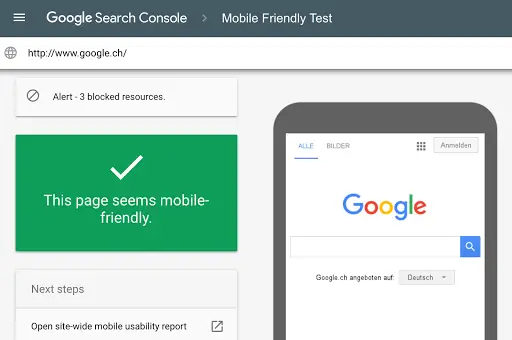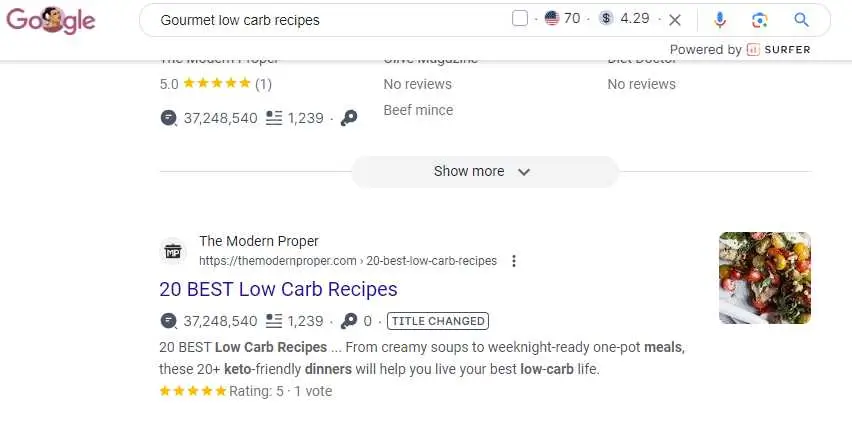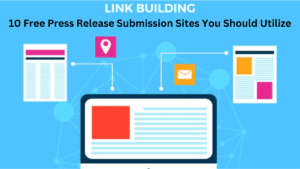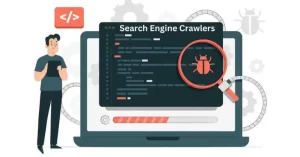E-commerce SEO Checklist
Let’s craft a comprehensive eCommerce SEO checklist specifically tailored. Since SEO is a dynamic field, some strategies that are cutting-edge today will be mainstream.
1. Technical SEO Foundations
Site Speed is Paramount: Prioritize lightning-fast page load speeds for both desktop and mobile. Aim for Core Web Vitals in the ‘good’ range, especially for product pages.

2. Mobile-First Optimization: Mobile shopping dominates; your site must be impeccably adapted for smartphones. Use Google’s Mobile-Friendly Test tool.

3. Structured Data: Employ rich snippets (product price, reviews, availability) to make your search listings stand out.

4. Crawlability and Indexation: Ensure Google Search Console cleanly indexes your site. Check for errors or blocked resources.
Top Strategies to Optimize SEO for Ecommerce Websites
Phase 1: Basis and Research
Assess the website’s health: crawl problems, indexation issues, mobile friendliness, and so on. Use tools like Google Search Console and Screaming Frog, or paid options like Ahrefs and SEMrush.
Thorough Keyword Research:
○ Discover which high-volume, relevant terms your target audience searches for.
○ Utilize tools like Google Keyword Planner, Ahrefs, SEMrush, and Moz.
○ Consider the search intent (informational, transactional, navigational).
Shift Focus to Topics: Target broad topics and use a cluster of semantically related keywords, as Google prioritizes understanding the depth of content.
Long-Tail Keywords: Capture specific search intent with long-tail phrases. These often reflect buyers closer to the purchase decision.
Conversational Search: Optimize for natural language queries (e.g., “What’s the best waterproof camera under $500?”)
● Competitor Analysis:
○ What keywords do they rank for?
○ Examine their backlink profiles for opportunities.
Competitor Analysis: Use tools like Ahrefs or SEMrush to discover keywords your competitors are ranking for and identify gaps in your strategy.
Phase 2: On-Page Optimization
● Title Tags:
○ Provide the important keywords at the beginning.
○ Make everything simple and informative. (around 60 characters).
● Meta Descriptions:
○ Create engaging descriptions that attract clicks. (around 160 characters).
○ While not a direct ranking criterion, they have an impact on click-through rate (CTR).
● URL Structure:
○ Clear, ordered, and keyword-inclusive URLs.
● Product Pages:
○ Product descriptions should be unique and keyword-optimized (avoiding manufacturer duplicates).
○ High-quality images of products with detailed alt-text.
○ Include feedback from customers and star ratings.
● Internal Linking: Create a sensible navigation structure and indicate link authority to important sites.
► Keywords for titles and Meta Description:
Making them interesting, useful, and keyword-rich to boost the click-through rate. (CTR).
► Headings (H1-H6):
Structure your content with clear headings so that readers and search engines can easily scan it.
► URL Structure:
Use URLs that are brief, informative, and related to your keywords.
► Image Optimization: Use informative file names, alt tags, and image reduction to make sure fast loading.
► Internal Linking: Create an obvious arrangement of internal links to help search engines understand your site’s structure and distribute authority.
Phase 3: Content Strategy
○ Blog: Create valuable content (guides, tutorials, comparisons) related to your products/industry.
○ Target long-tail keywords to attract a broader audience.
○ FAQs: Address common customer questions, building topical authority.
○ Optimize Category Pages: Write introductory content for category pages targeting relevant keywords.
○ Go Beyond Product Descriptions: Provide unique, helpful content like guides, comparison charts, and customer reviews to address shopper questions.
○ E-A-T: Prioritize expertise, authoritativeness, and trustworthiness. Highlight credentials for content creators in sensitive niches (YMYL – Your Money or Your Life).
○ Video Content: Embrace product demos, tutorials, and unboxing videos. YouTube is often the second largest search engine, and videos can be embedded in your product pages.
Phase 4: Off-Page Optimization – Link Building
○ Guest blogging: Contribute high-quality articles to relevant websites in your niche and earn backlinks to your site. Resource Page
○ Link Building: Find “resource” pages and submit your site as a good addition.
○ Broken Link Building: Find broken links on relevant websites and give your site’s content as a replacement.
○ Social media: connections can boost the visibility of your content and generate potential backlinks, albeit they are not key ranking criteria itself.
○ Quality Backlinks: Focus on obtaining links from reputable, high-authority sites relevant to your niche.
○ Brand Mentions: Even unlinked mentions of your brand can be valuable for building awareness and trust.
○ Social Signals: While not a direct ranking factor, active social media engagement can drive traffic and visibility.
Phase 5: Technical Excellence
Site Speed Optimization: Compress images, minimize code (JS, CSS), leverage a CDN, and use caching.
Mobile Responsiveness: Ensure your site provides an excellent experience on all devices.
Schema Markup: Implement structured data (product, reviews, etc.) to help search engines better understand your content.
► Specific Trends- SEO for Ecommerce Websites
Visual Search: Optimize images for discovery through Google Lens and similar tools.

Voice Search: Ensure content is conversational to capture “near me” searches and questions.
Local SEO: Critical for stores with physical locations. Maintain a meticulously accurate Google Business Profile.
Relevant Notes: SEO for Ecommerce Websites
Monitor and analyze: Using Google Analytics, Search Console, and SEO Tools to Track Your Progress and Adjust the strategy based on data.
No Shortcuts: SEO is a continuous action. Avoid illegal activities that may provide short-term profits but pose long-term risks.
Please Let me know if you’d want to explore more into any part of this checklist.
Also, Read- 5 Essential eCommerce Marketing Strategies to Drive Sales
Also, Read- SEO Performance Metrics | 14 Crucial SEO Metrics You Must Monitor




